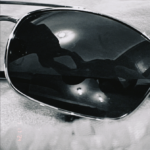The History and Popular Music of the ’60s class learned about Dusty Springfield’s 1969 soul record. Here are their reactions.
Lily Brooks:
The cover and description of the album first made me brace myself for yet another cheesy ’60s love album with corny lyrics and production. After my second time listening, I realized that it was, in fact, not another cheesy ’60s album.
This 33-minute record has a distinct style with simple lyrics and an orchestral sound with many instrumental layers. The first song that kicks off the vibe is ‘Just a Little Lovin’, showcasing Dusty’s soft voice and range. This song feels like a hug. The sweeping violins and melody could make it fit in a rom-com, but not in a bad way. So many ’60s songs don’t do love ballads right. Mostly, because the song tries too hard to be catchy and doesn’t have the layered instruments to make it a good song. This album, on the other hand, features a beautiful sounding band and has a cohesive sound throughout the album that’s not repetitive.
The second song, “So Much Love”, contrasts the first with a strong rhythm and a church choir-type feel. The strong background voices complement Dusty as she features her vocal range, showing her talent early in the album. Something I noticed early on was the use of violins throughout her songs. I feel like this underrated instrument was not used enough during this time period, especially when it came to heartfelt love songs like hers. It adds more emotion to the pieces than her voice can sometimes lack.
“Son of a Preacher Man” was a personal favorite. It was more soul than anything on the album with the saxophones and trumpets making it an upbeat dance song. The lyrics were also some of my favorite off of the album. Another favorite of mine was the next song, “I Don’t Want to Hear it Anymore,” which is a strong contrast to the previous song. It is more of a soft ballad which made me envision hearing this song walking through the streets of Rome. The violins in this song proves why this instrument is needed in songs like these.
“Don’t Forget About Me” surprised me with the electric guitar in the background that reminded me of something I would hear in a rock album, like something by the Beatles. This song stands out from the album in terms of style but it doesn’t stick out in a way that deterred from the consistent style. “Breakfast in Bed” and “Just One Smile” were both slow, and allowed Springfield to show more emotional depth. “The Windmills of your Mind” surprised me with its Western/ Spanish inspired vibe, with maracas in the background which had previously not been used on her songs. I’m not sure why but this song reminded me of Lana Del Rey’s style of high pitched singing, as well as in “In the Land of Make Believe.” Although “I Can’t Make it Alone” wasn’t a personal favorite, I couldn’t have picked a better song for her to end the album with, it just felt right. Dusty adds a fresh sound to ’60s ballads that I loved. Without the Spector-like wall of sound behind her, I don’t think her songs would have been nearly as beautiful and powerful. But because of this sound, it was an amazing, cohesive album.
Pritam Khalsa:
My favorite song was Dusty’s cover of “The Windmills of Your Mind.” The lyrics are somewhat bizarre but her voice is beautiful and it sounds spooky. She sings about unusual things so I decided to draw them how I picture them. I drew a wheel within a wheel, a red carnival balloon and a windmill. I also drew carousel horses around the moon for “carousel that’s turning running rings around the moon” and the earth shaped like an apple for “the world is like an apple whirling silently in space.” I drew little keys and leaves floating around. The sun is drawn as a “clock whose hands are sweeping past the minutes of its face” with a face and clock hands.
Gibson McCoy:
Although this is debatable, Mary Isobel Catherine Bernadette O’Brien, more commonly known by her professional name Dusty Springfield, stands a good chance to be given the title of “The Mom of the Music Industry.” When asked the question of “who in your life has influenced you the most” normally our first response isn’t our mothers, but maybe it should be.
Dusty in Memphis was not the commercial biggest success. The album overall reached number 99 on the US album charts and failed to even chart on the British top 40, even though the album contained the track “Son of a Preacher Man.” In the studio, Dusty was very particular and wanted to be in control. People knew this but she was never credited as a producer on previous albums. While recording in Memphis she suggested to Atlantic records to sign a new group called Led Zeppelin. Dusty worked with bassist John Paul Jones who was a member of her touring band. She fought for Led Zeppelin to get signed and they ended up getting signed in 1968. The contract that Atlantic Records offered Led Zeppelin came with one of the biggest advances handed out at that time. The record company also gave them an unexpected amount of control over their music. Another example of her opening doors was in 1965, when she hosted a special Motown edition of the popular British TV music series called Ready Steady Go! The show brought up many of the now top selling Motown artists. Although her albums were not directly associated with the British music/dance movement, northern soul, her music was seen as a contributing factor in the formation of the genre.
Sometimes a mother is not seen as the person who opens the most doors but in this case Dusty pushed boundaries. She was not the stereotypical soul singer, and if you asked someone to name a soul singer the answer would probably be Aretha Franklin, Otis Redding or James Brown. Dusty in Memphis was not considered one of the most influential albums until at least two or three decades after its release. Now the album is in the Grammy Hall of Fame and in March 2020 the US Library of Congress added it to the National Recording Registry.
Sam Swartley:
I covered “Son Of A Preacher Man,” with the influence of Dusty’s sound mixed with my own (more out there) jazzy sound creating a pretty cool arrangement. That first main lick is really something. Enjoy!






Gibson: Why are you calling her “the mom of the music industry?” Are you completely unable to see a woman as in anything but a traditional role? Dusty wasn’t anybody’s mother. She was a brilliant gay woman singer and producer and it’s laughable that in order to write about her you have to frame her as somebody’s Mommy. Grow up, please.
Hey buddy, I know you’re mad at me but you’re not supposed to be on the internet until you finish your homework.